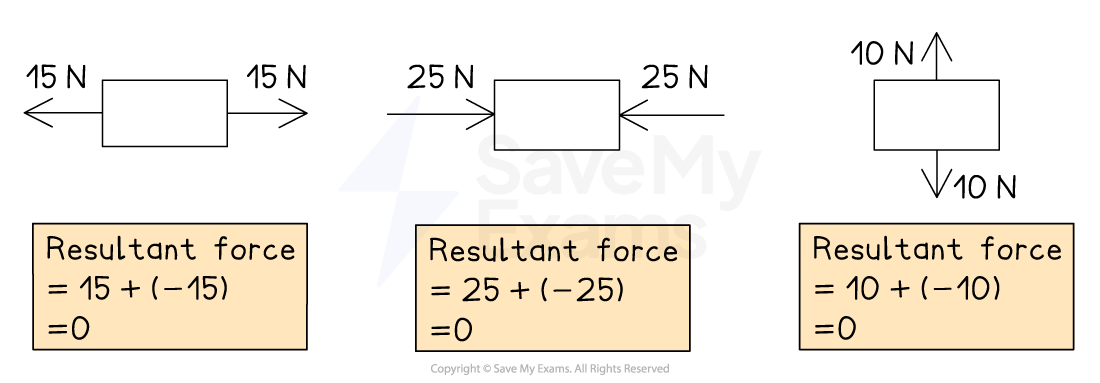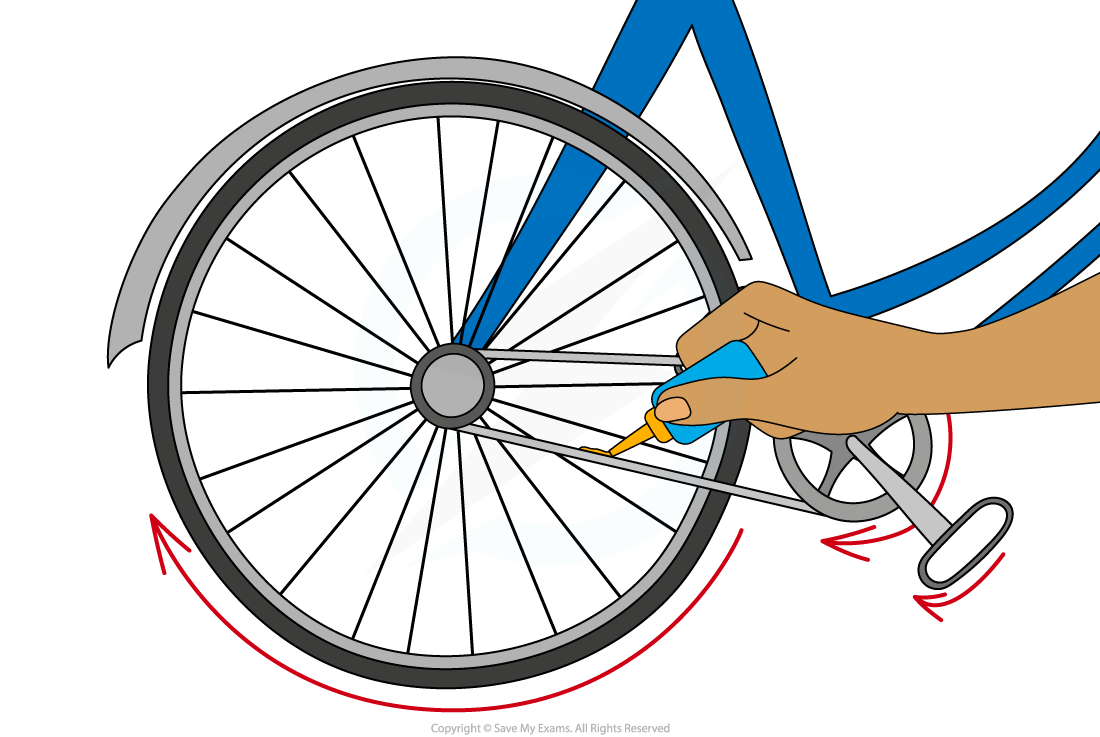Newton's Laws & Balanced Forces (SQA National 5 Physics): Revision Note
Exam code: X857 75
Did this video help you?
Newton's laws & balanced forces
Balanced forces
Force is a vector quantity with both magnitude and direction
Therefore, two or more forces can be combined in the same way as other vector quantities, such as displacement and velocity
The combined effect of all the forces acting on an object is called the resultant force
Forces acting along a straight line are said to be balanced if they are equal in magnitude (size) but act in opposite directions
The combined effect is the same as no force acting
The resultant force along that line is zero
Objects with balanced forces

Examiner Tips and Tricks
A common misconception is that balanced forces mean no forces are acting at all. Unless we are considering an object in space, there will always be forces acting, such as weight. Make sure you understand that balanced means equal and opposite, and that this has the same effect as no forces acting.
Newton's first law
Newton's first law of motion states:
An object will remain at rest or continue to move with constant velocity unless acted on by an unbalanced force
This means that, when all the forces acting are balanced:
a stationary object will remain at rest
a moving object will continue to move at the same speed in the same direction
Objects with zero resultant force

Worked Example
A student did some online research and found out that the Moon orbits the Earth at a constant speed of around 2000 mph.
The student says that this is not an example of Newton's first law of motion. Is the student correct? Explain your answer.
Answer:
Step 1: Recall Newton's first law of motion
Newton's first law of motion states that objects will remain at rest, or move with a constant velocity, unless acted on by an unbalanced force
Step 2: Determine if the object is at rest or if it is moving with a constant velocity
The Moon, in this case, is not at rest
It is moving at a constant speed
But it is not moving in a constant direction - it continually orbits the Earth
Hence, it is not moving with a constant velocity, because velocity is a vector quantity
Step 3: State and explain whether the student is correct
The student is correct
The Moon moves with a constant speed, but always changes direction
So it is not moving with a constant velocity, and is not an example of Newton's first law of motion
Frictional forces
Friction is a force that opposes motion
Frictional forces occur when two surfaces move over one another
For an object moving at constant velocity:
Applied force = frictional force
Consider a car travelling at a constant velocity
The driving force exerted by the engine on the car is balanced with the frictional force exerted by the road on the car
According to Newton's first law, as long as the forces remain balanced, the car will continue to travel in a straight line at a constant speed
To change the car's speed or direction, it would have to be acted upon by a resultant force, e.g. by braking or accelerating
A car travelling at constant velocity

Another type of friction that occurs when an object moves through a fluid (a liquid or a gas) is called drag
Air resistance is a specific type of drag
When objects move through the air, they collide with the air particles and experience friction
If the object's speed through the fluid increases, the frictional (drag) force also increases
A helicopter flying at constant speed

Reducing friction
The effects of friction can be reduced by
streamlining
lubrication
placing bearings between moving parts
making surfaces smoother
Lubricating parts of a bicycle to reduce friction

Air resistance must be carefully considered in vehicle design, for example:
Racing cars have a streamlined design with a curved, angled front to experience less air resistance and travel faster
Aeroplanes travel at high altitudes where there is less air resistance (since the air is less dense)
A racing cyclist adopts a more streamlined posture to reduce the effects of air resistance
Also, the bicycle, clothing and helmet have an aerodynamic design to allow them to go as fast as possible
Reducing air resistance by streamlining

Worked Example
A car travels in a straight line at a constant velocity.

Determine the magnitude of the frictional force acting on the car.
Answer:
Step 1: Recall Newton's first law of motion
Newton's first law of motion states that objects will remain at rest, or move with a constant velocity unless acted on by a resultant force
Step 2: Relate Newton's first law to the scenario
Since the car is moving at a constant velocity, there is no resultant force acting
This means the driving and frictional forces are balanced
Step 3: State the value of the frictional force
Frictional force = driving force
Frictional force = 3 kN
Examiner Tips and Tricks
One of the most common misconceptions in physics is that a force is needed to keep something moving. This is incorrect. A force is only needed to change an object's motion (i.e. to speed up, slow down, or change direction). Without friction, motion continues indefinitely. For example, a rock drifting through space (away from the influence of gravity) will continue to drift at the same speed in the same direction, potentially forever. The only way to change its motion is for an unbalanced force to act on it.

Unlock more, it's free!
Did this page help you?